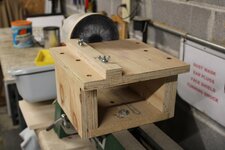Painfullyslow
Member
So now that I am getting a little bit more familiar with basic segmenting I have come to realize how critically important it is to have true and square blanks.
How are you fine folks (with tons more experience than I have) accomplishing this?
How are you fine folks (with tons more experience than I have) accomplishing this?

